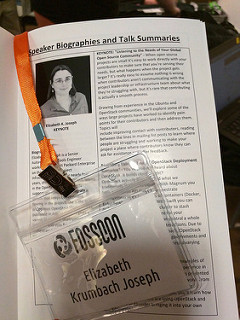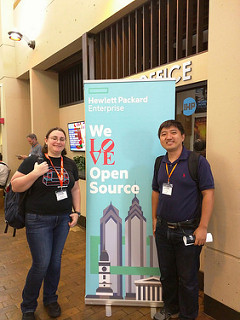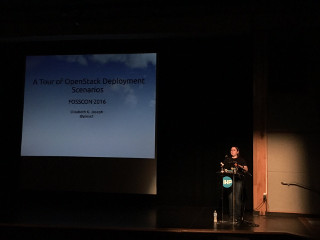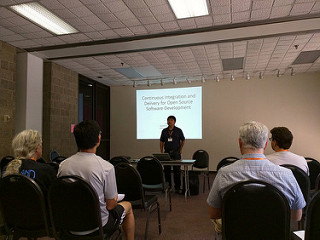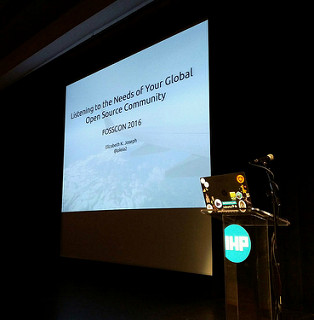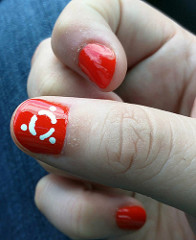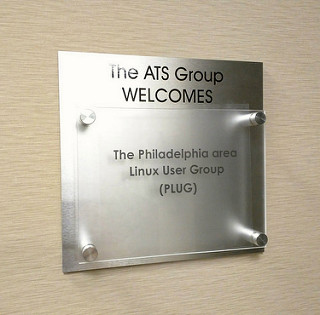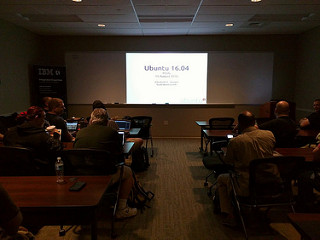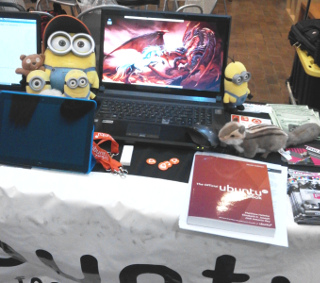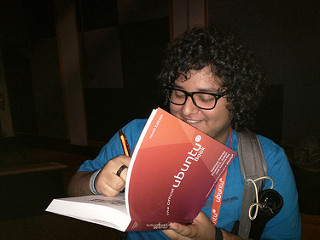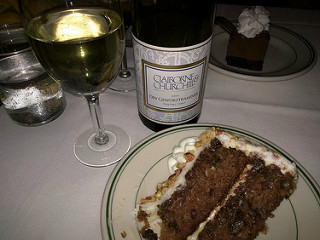My tourist adventures in Mumbai continued on Saturday following the conference. I made plans through the hotel concierge to hire a driver and tour guide for the day. I was initially a bit worried about the weather, since reports (and warnings!) had forecasted rain, but we lucked out. I was picked up from the hotel promptly at 10AM and thus began a wonderful day with my tour guide, Mala Bangera.
I’ll start off by say that Mala was a wonderful guide, one of the best I’ve ever had. She had over 20 years of experience and so was extremely knowledgeable, had lived all over the world (including the US) and had strong relationships with people at all the places we visited. She was able to advise me when I could take pictures, and honestly explain how much and when to tip people we encountered and interacted with throughout our journey (a fellow I got my picture with, a woman whose wares I asked for a photo of, a fellow who watched our shoes at a temple). I had a wonderful day under her guidance, and I’m so glad I worked with her instead of spending the day venturing out on my own!
As for where we went, I largely let her set the agenda when I explained that I just wanted to see some popular tourist sites and temples. It was the right choice. Our first stop was the Dhobi Ghat, a huge open air laundry facility. As I’ve learned some about domestic history, laundry looms large in the list of things that was incredibly laborious and time-consuming until the modern era of washing machines that people like me now have in our homes. Of course the modern washer and dryer I have assume access to a lot of water and electricity, and space, which is not ubiquitous in India. Instead, Mala explained that many people send their clothes out to be washed, dried, pressed and delivered back to their home, and a lot of this work happens at a dhobi ghat.
 Dhobi Ghat (laundry)
Dhobi Ghat (laundry)Our next stop was to see the Dabbawalas. These folks collect your prepared lunch from your house in morning and deliver it to work around lunchtime. That means you get your home-cooked meal at lunch (which is typically a large meal there) and you don’t need to carry it with you when you leave home early in the morning. Doing this in bulk allows for an inexpensive service and a lifelong profession for the Dabbawalas, one fellow my tour guide introduced me to has been doing it for over 25 years. It was a Saturday so the pickup location we visited wasn’t as busy as it was on week days, but it was worth seeing anyway.
 Dabbawalas sorting and carrying lunches
Dabbawalas sorting and carrying lunchesFrom there we went to the Chhatrapati Shivaji Terminus (CST), the train station! A Gothic Revival designed by Frederick William Stevens in 1887, the station first caught my eye on the previous Sunday when we drove by it. This time we were able to actually go inside, buy a platform ticket and wander around. I advised against taking pictures inside the station itself, but I did see a whole bunch of trains, from the city commuter trains to the larger long-distance trains. I learned that they have cars reserved exclusively for women, which is understandable given the need to accommodate modest religious faiths on trains that get incredibly packed during weekday commutes (genders were also segregated at most security check points I went through, frequently with women given private screening behind a curtain).
 Chhatrapati Shivaji Terminus
Chhatrapati Shivaji TerminusWe then drove over to a highly respected shop in the area where I picked up some little gifts, and a couple not so little things for myself. I had a lovely experience, while shopping for some Indian sapphire jewelry (my birthstone) they brought over some wonderfully spiced Kashmiri Kahwa hot tea, and also gave me some to take home with me as I was checking out.
The next stop was the Babu Amichand Panalal Adishwarji Jain Temple, which is routinely called the most beautiful Jain Temple in Mumbai. As far as temples go, my guide explained that those by the Jains tend to be the most beautiful in India. This temple absolutely lived up to the hype. When you enter you’re instructed to remove your shoes as you walk around. My guide is a friend of the temple and was able to escort me inside and encouraged my photo taking, unaccompanied tourists are asked to remain in the courtyard so it was a real honor to be able to go in.
 At the Jain Temple
At the Jain TempleMore photos from the Jain temple here: https://www.flickr.com/photos/pleia2/albums/72157669057260703
Our final big stop was the Hanging Gardens of Mumbai. The gardens are perched on a hill that covers a water reservoir. It’s quite pretty, with various flowering plants and bushes, and a collection of animal-shaped topiaries (giraffe! elephant! ox cart!). The garden is also located near the Zoroastrian Tower of Silence, where their dead are exposed for reclamation by nature.

On the drive back to my hotel we passed the Siddhivinayak Temple, dedicated to the Hindu Lord Ganesha. We also stopped to get some fruit-flavored ice cream from Natural Ice Cream, after a few samples, I had the watermelon and jackfruit ice creams, yum! We also passed the Haji Ali Dargah, a mosque and tomb that sits in Worli Bay. A thin strip of land goes out to the mosque, but it’s covered over during high tide, limiting when visits are possible. As a result, when you see it during high tide the building seems to be floating out in the bay. I developed a fascination for this as I was there, passing it a few times during my trip during varying levels of tide. I would love to visit it more closely some day.
 Haji Ali Dargah
Haji Ali DargahSaturday evening was spent out to dinner and drinks with some of the SANOG conference folks, where I had a Bira91 White Ale, a wheat beer that is one of the few solid, non-lager beers I’ve encountered in Asia. In addition to enjoying wonderful company and beer at dinner, I had my final trip in an auto rickshaw that night as we wanted to get back to the hotel without getting drenched from the rain. This rickshaw ride was outside of high traffic areas, so it was considerably less nerve-wracking than the ride earlier in the week!
 Inside an auto rickshaw earlier in the week, with a cameo from a double-decker bus!
Inside an auto rickshaw earlier in the week, with a cameo from a double-decker bus!My final day in Mumbai was Sunday, which I spent getting loose ends tied off, visiting with some conference people and then in the evening with my friend Devdas who took me on a train to south Mumbai again. Now, you all know me. I love trains. It was nice to get to take one on a Sunday evening, not too crowded and as a critical piece of infrastructure the trains are kept maintained.
 Selfie on a train
Selfie on a trainWe got off at the station I had visited the day before and walked down to Leopold Cafe, which was recommended by a friend who visited Mumbai in the recent past. As a landmark and tourist destination, the cafe also made headlines eight years ago as one of the sites of the 2008 Mumbai attacks. I admit that with a flight ahead of me, I just had some pretty basic continental food, though my chicken sandwich still had a nice bite to it. The walk to the restaurant took us into the Colaba Causeway market. I had already done my shopping for the trip, but it was neat to see all of the stuff they had for sale, and to make our way through the crowds of people on the sidewalks and streets.
My evening concluded by skipping the train back due to the long, soggy walk back to the station and my inclination to stay dry before my flight. I instead took a long Uber ride back to the hotel to pick up my luggage. The ride back started out in a downpour, but eventually cleared up. I was able to see the Haji Ali Dargah lit up at night, and all the people hanging out on Marine Drive, with the signature Queen’s Necklace lights along the boulevard. I also enjoyed going over the Sky Link bridge one final time at night when it wasn’t raining.
And with that, my trip concluded! More photos from throughout my adventures in Mumbai here: https://www.flickr.com/photos/pleia2/albums/72157671033977871








